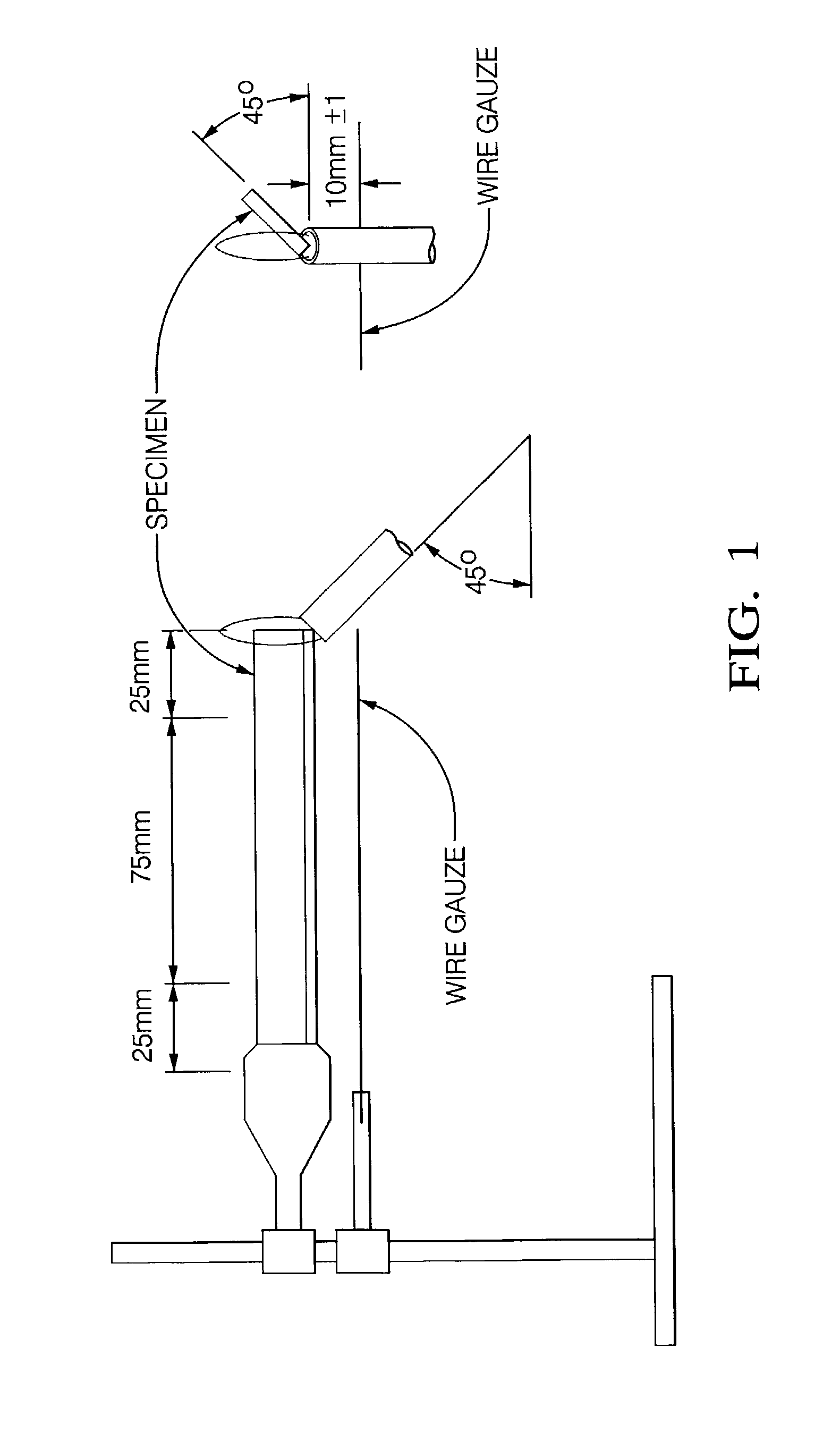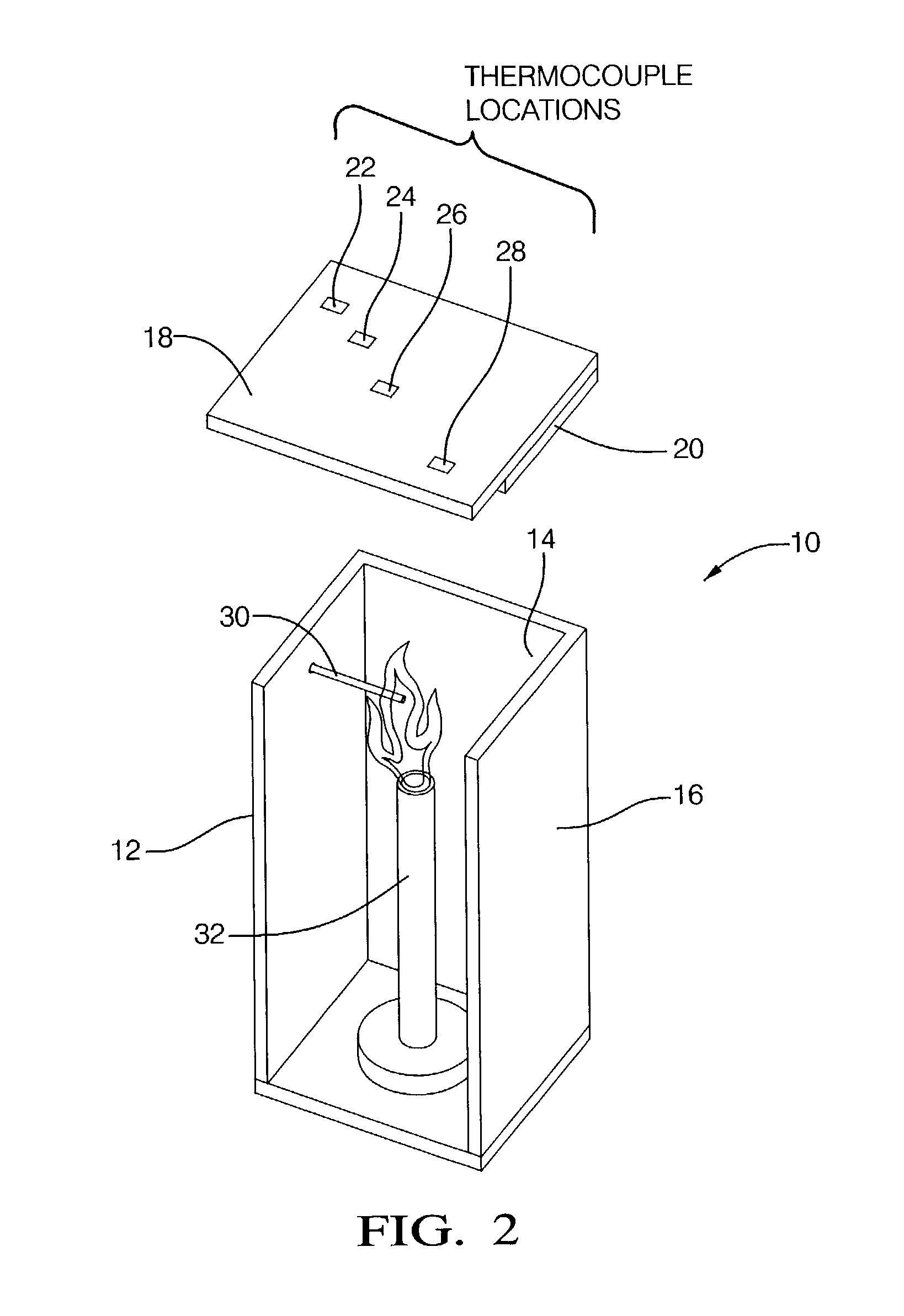Intumescent fire retardant composition and method of manufacture thereof
a fire retardant composition and intumescent technology, applied in the field of intumescent composition and intumescent additive mixture, can solve the problems of intumescent coating, long process cycle, weak sponge with limited life, etc., and achieve the effect of reducing smoke, improving processability of intumescent composition, and reducing smok
- Summary
- Abstract
- Description
- Claims
- Application Information
AI Technical Summary
Benefits of technology
Problems solved by technology
Method used
Image
Examples
examples 2-3
[0050] In these examples, the compositions of which are shown in Table 3, the synergistic effect of antimony oxide and intercalated graphite is demonstrated. In Example 2, the polymeric resin comprises HDPE, whereas in Example 3, the polymeric resin is a blend of HDPE and polypropylene. The HDPE utilized in Examples 2 and 3 is WR 201, a high viscosity polyethylene obtained from Atofina, Paris, France. The intumescent compositions were tested in accordance with Underwriters Laboratory vertical flammability test UL-94. The rating was V -0 for both Examples 2 and 3, indicating that the sample self-extinguished after removal of the flame. Moreover no after glow, and no melt dripping was observed.
[0051] In this tests a vertically oriented bar (125 mm long, 13 mm wide, and 3 mm thick) was exposed to a Bunsen burner flame for ten seconds. If the sample self extinguished, burn time (t1) was noted. The sample was then exposed to the flame for an additional 10 second period. If it again self-...
examples 4-7
[0052] In these examples shown in Table 4, the melt viscosity of the polymer, e.g., polyethylene, utilized in the intumescent compositions was varied. The melt viscosity of a polymeric resin is measured by using the melt index, which is the number of grams of molten polymer that passes through a capillary when the polymer is heated to a certain temperature above its melting point and a load is applied to the polymer to push it through a capillary. Generally, for viscous polymers a load of 21,600 grams is needed in order to push the molten polymer through the capillary, while for lower viscosity polymers a load of 2,160 grams is used. In Example 4, a blow molding grade of polyethylene, WR 201 B, made by Atofina, having a melt index of 8 (at a load of 21,600 grams) was utilized. In Example 5, the polyethylene utilized was K-44-24-122, a medium melt viscosity polymer supplied by Solvay, Houston, Tex. The K-44-24-122 had a melt index of 0.35g / 10 minutes measured at 190.degree. C. and a ...
example 8
[0053] In this example, polypropylene obtained from Exxon Chemical Company, Houston, Tex. was employed in the intumescent composition. The polypropylene had a melt index of 3.1 grams / 10 minutes at 230.degree. C. and a load of 2,160 grams. The composition and the properties of Example 8 are shown in Table 5, where it can be seen that the material has a UL-94 rating of V -0 and passes the fire shield flammability test.
5 TABLE 5 Example 8 Components (wt %) Chlorinated Polyethylene 19 (CPE 3615) Polypropylene 45 Chlorowax 5 (PAROIL 145) Magnesium hydroxide 15 (MAGSHIELD) Distearylthiodipropionate 0.5 (DSTDP) Hindered phenol 0.5 (WINGSTAY L) Antimony Oxide 5 (FIRESHIELD) Graphite Flake 5 (DXN 3579) Glass fiber 5 Properties UL-94 Classification 94V-0 (1 sec) Fire shield flammability Passed test Tensile Modulus @ 50% 14.14 strain (MPa) Tensile strength (MPa) 15.65 Strain at Break (%) 51.6 Flexural Modulus (MPa) 1177
PUM
| Property | Measurement | Unit |
|---|---|---|
| wt % | aaaaa | aaaaa |
| temperatures | aaaaa | aaaaa |
| diameters | aaaaa | aaaaa |
Abstract
Description
Claims
Application Information
 Login to View More
Login to View More - R&D
- Intellectual Property
- Life Sciences
- Materials
- Tech Scout
- Unparalleled Data Quality
- Higher Quality Content
- 60% Fewer Hallucinations
Browse by: Latest US Patents, China's latest patents, Technical Efficacy Thesaurus, Application Domain, Technology Topic, Popular Technical Reports.
© 2025 PatSnap. All rights reserved.Legal|Privacy policy|Modern Slavery Act Transparency Statement|Sitemap|About US| Contact US: help@patsnap.com


